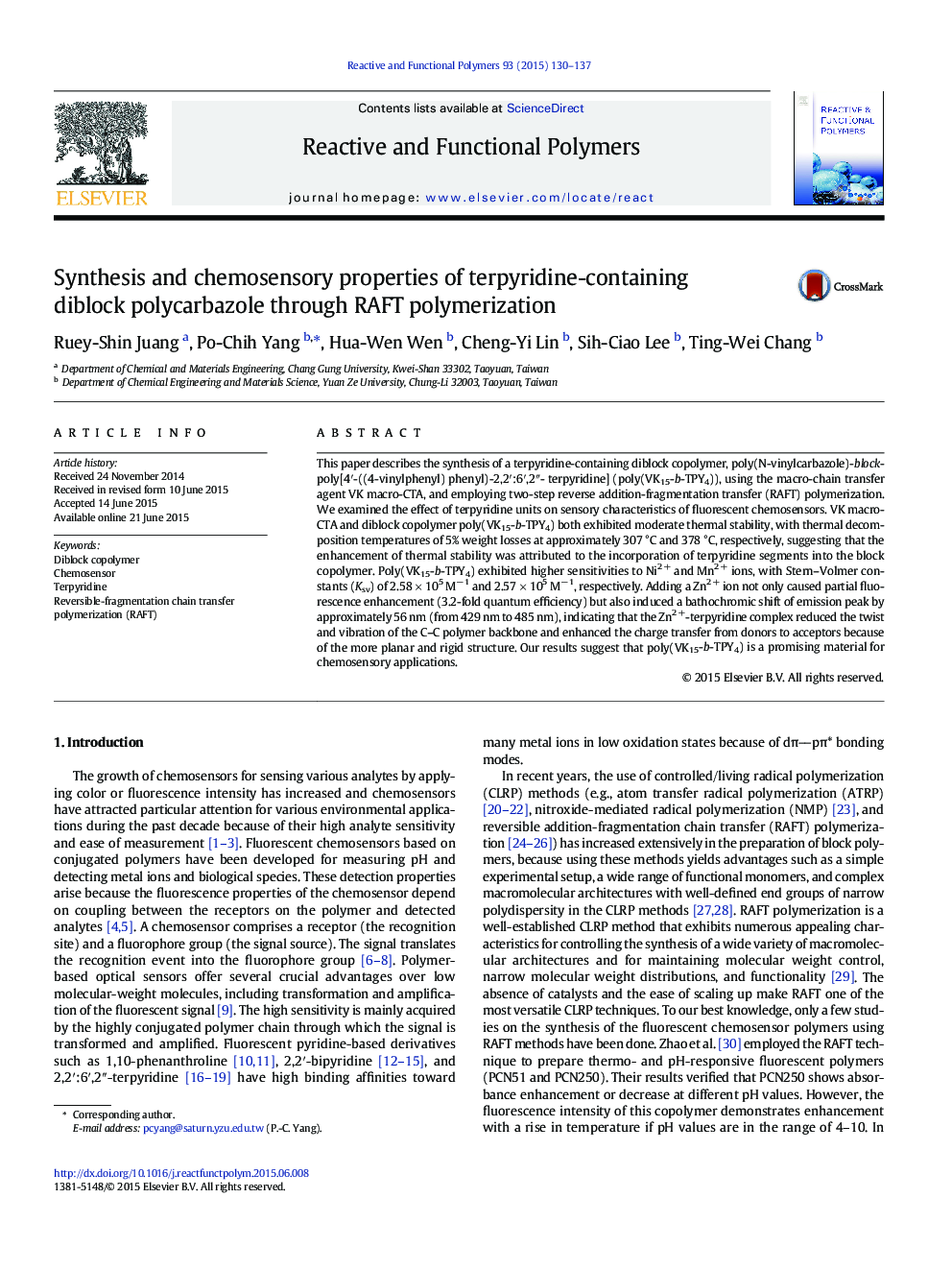| Article ID | Journal | Published Year | Pages | File Type |
|---|---|---|---|---|
| 5209739 | Reactive and Functional Polymers | 2015 | 8 Pages |
Abstract
This paper describes the synthesis of a terpyridine-containing diblock copolymer, poly(N-vinylcarbazole)-block-poly[4â²-((4-vinylphenyl) phenyl)-2,2â²:6â²,2â³- terpyridine] (poly(VK15-b-TPY4)), using the macro-chain transfer agent VK macro-CTA, and employing two-step reverse addition-fragmentation transfer (RAFT) polymerization. We examined the effect of terpyridine units on sensory characteristics of fluorescent chemosensors. VK macro-CTA and diblock copolymer poly(VK15-b-TPY4) both exhibited moderate thermal stability, with thermal decomposition temperatures of 5% weight losses at approximately 307 °C and 378 °C, respectively, suggesting that the enhancement of thermal stability was attributed to the incorporation of terpyridine segments into the block copolymer. Poly(VK15-b-TPY4) exhibited higher sensitivities to Ni2 + and Mn2 + ions, with Stern-Volmer constants (Ksv) of 2.58 Ã 105 Mâ 1 and 2.57 Ã 105 Mâ 1, respectively. Adding a Zn2 + ion not only caused partial fluorescence enhancement (3.2-fold quantum efficiency) but also induced a bathochromic shift of emission peak by approximately 56 nm (from 429 nm to 485 nm), indicating that the Zn2 +-terpyridine complex reduced the twist and vibration of the C-C polymer backbone and enhanced the charge transfer from donors to acceptors because of the more planar and rigid structure. Our results suggest that poly(VK15-b-TPY4) is a promising material for chemosensory applications.
Related Topics
Physical Sciences and Engineering
Chemistry
Organic Chemistry
Authors
Ruey-Shin Juang, Po-Chih Yang, Hua-Wen Wen, Cheng-Yi Lin, Sih-Ciao Lee, Ting-Wei Chang,
